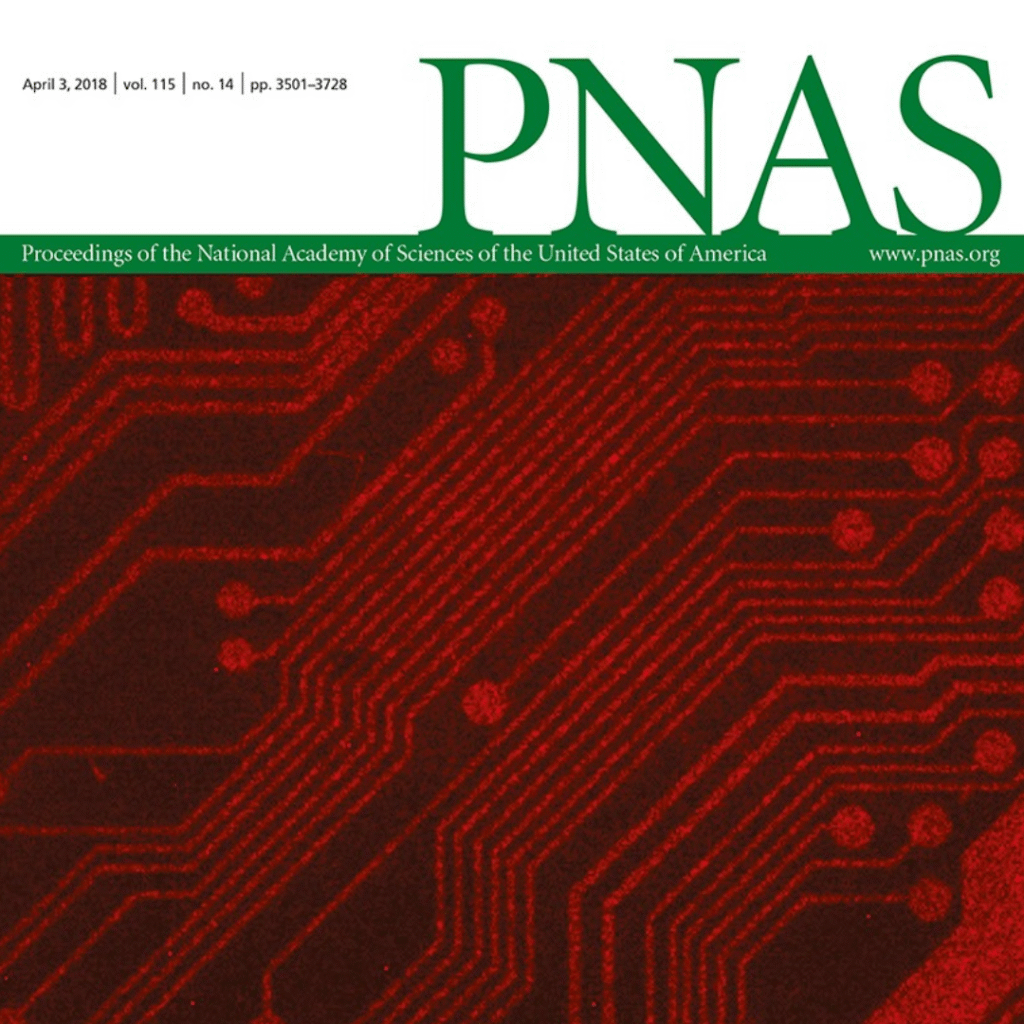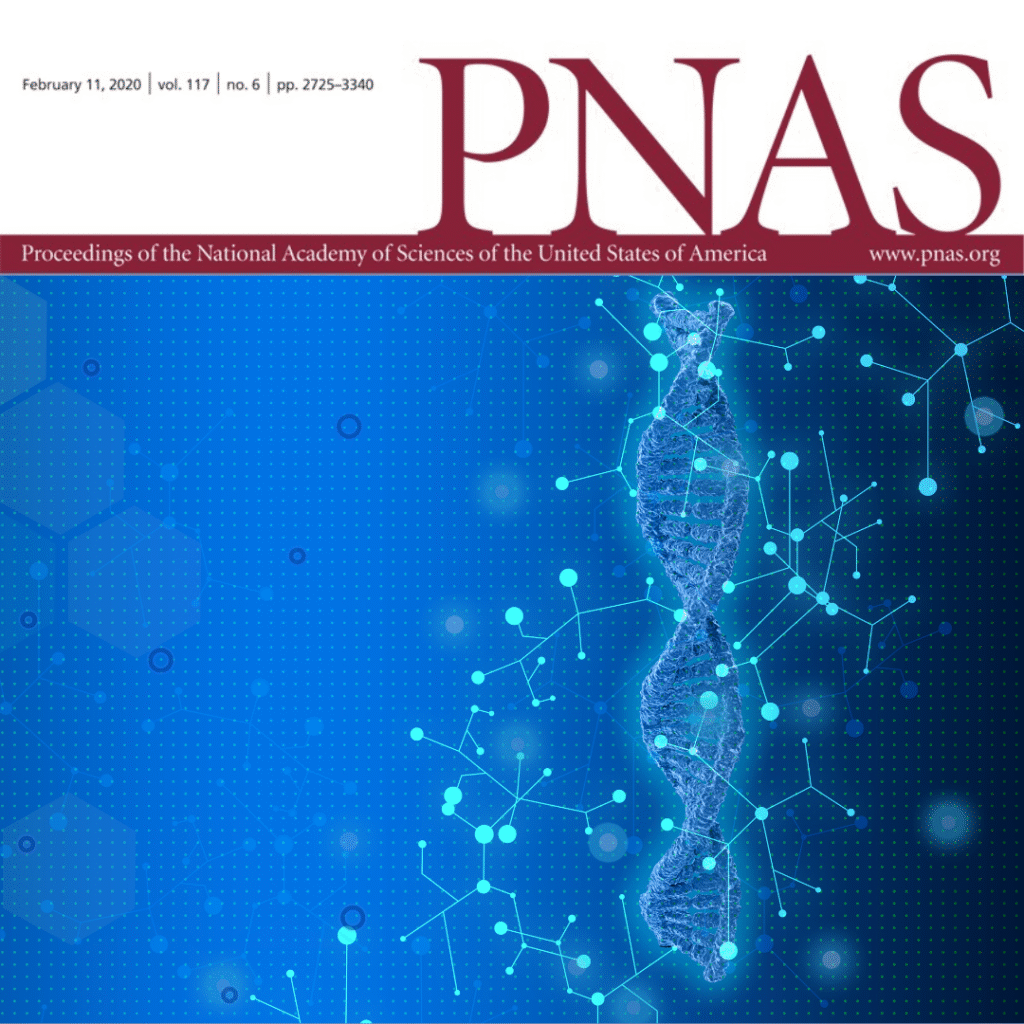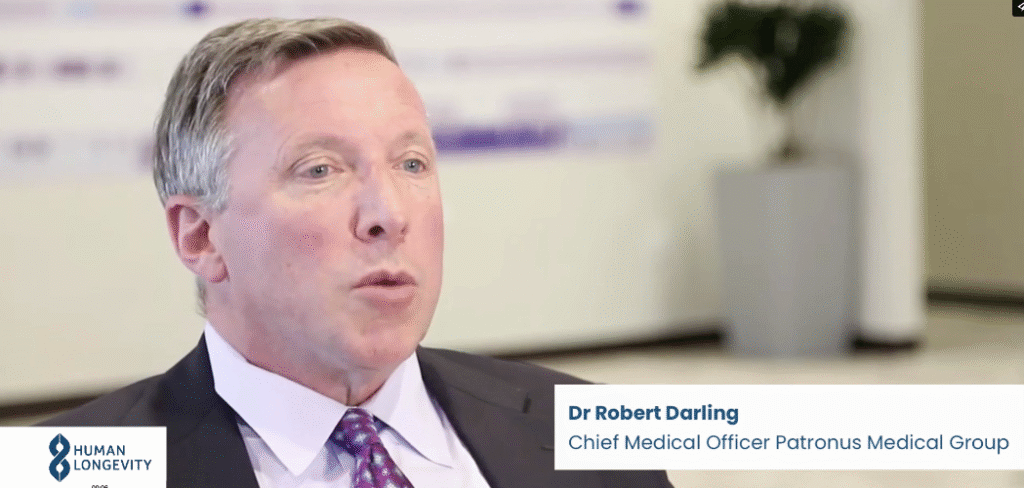The Sleep Blueprint for High Achievers: Why Elite Performers Prioritize Rest
article Home Article The Sleep Blueprint for High Achievers: Why Elite Performers Prioritize Rest Sleep is the Secret Weapon of High-Performing Executives Behind the successful 1% high-performing entrepreneur or corporate leader lies a habit they rarely compromise: quality sleep. While hustle culture has long glorified late nights and early mornings, science paints a clearer—and healthier—picture. Sleep isn’t a luxury. It’s a biological necessity, especially for those making high-stakes decisions, managing large teams, and striving for sustained peak performance. According to our data, nearly 40% of high-achieving executives are experiencing sleep-related health issues. That’s 10% higher than national norms, and we believe that it’s tied to the high-stress, busy lifestyle environments business leaders are typically associated with. In this article, we will do a deep dive into why this matters, and more importantly, what you can do about it tonight to change your healthspan. Why It Matters: The Science of Sleep and Chronic Disease Before diving into a sleep routine, it’s essential to understand the “why.” The health consequences of sleep deprivation are not minor—they’re life-altering. Cardiovascular Disease: Poor sleep increases blood pressure, triggers inflammation, and disrupts heart rate variability—all contributors to heart attacks and strokes. One study in the European Heart Journal found that people who sleep less than 6 hours per night had a 20% higher risk of heart disease. Type 2 Diabetes: Sleep loss impairs insulin sensitivity and glucose metabolism. The American Diabetes Association notes that chronic sleep restriction is a recognized risk factor for developing type 2 diabetes. Obesity: Inadequate sleep alters hunger hormones—ghrelin and leptin—leading to increased appetite and cravings, particularly for high-calorie foods. The Nurses’ Health Study showed that women who slept five hours or less per night were 15% more likely to become obese. Alzheimer’s Disease: Sleep is when the brain clears amyloid-beta, a neurotoxic waste product linked to Alzheimer’s. Chronic sleep deprivation accelerates cognitive decline and increases dementia risk, according to research from the NIH and Alzheimer’s Association. Mental Health Disorders: Poor sleep is both a cause and a consequence of depression and anxiety. Sleep disturbances increase the risk of developing mood disorders and exacerbate existing conditions. Immune Dysfunction: Sleep helps regulate immune cell production and inflammatory cytokines. Even one night of poor sleep can impair immune function, making you more vulnerable to infections and slower to recover. The Bottom Line: Optimizing your sleep is one of the simplest, most impactful strategies for disease prevention, cognitive sharpness, and emotional resilience. It’s the foundation upon which all other health and performance habits are built. The Data Behind the Dream Executives in the top 1% of performance metrics report getting between 7.5 to 9 hours of sleep per night. This parallels the sleep patterns of elite athletes, including NBA players, many of whom now use wearable sleep technology to track and optimize their recovery cycles. Teams like the Golden State Warriors and San Antonio Spurs have implemented sleep coaching as part of their training protocols. The message is clear: whether on the court or in the boardroom, sleep is performance-enhancing. According to the CDC, over 35% of American adults sleep less than 7 hours per night—increasing their risk of obesity, diabetes, heart disease, stroke, and depression. Chronic sleep deprivation impairs memory, decision-making, emotional regulation, and even immune function. How To Get a Better Night’s Rest: The Executive Sleep Protocol Day 1: Eliminate Screen Time 60 Minutes Before Bed Why: Blue light from phones, TVs, and computers suppresses melatonin, the hormone that signals your brain it’s time to sleep. Tip: Replace screens with a relaxing routine—reading, stretching, or just talking to your spouse. Day 2: Establish a Consistent ‘7-day’ Bedtime and Wake-Up Time Why: A regular sleep schedule anchors your circadian rhythm, leading to deeper, more restorative sleep. Tip: Stick to this schedule even on weekends to avoid social jet lag or a case of the Mondays. This sounds counterintuitive, but sleeping in on weekends can give you worse sleep quality and leave you feeling more tired. Day 3: Introduce a Sleep Monitoring Device Why: Use tools like wearable devices or a sleep tracking pad, which offer insights into your sleep quality, duration, and recovery patterns. Tip: Use this data to track trends and adjust your routine. Day 4: Prioritize 30 Minutes of Daily Physical Activity Why: Moderate exercise enhances sleep quality, especially if done earlier in the day. Tip: Even a brisk walk counts. Avoid intense workouts close to bedtime. Day 5: Create a Morning Ritual Why: Exposure to natural light in the morning helps regulate your internal clock. Tip: Include stretching, journaling, hydration, and mindfulness in your routine. Day 6: Optimize Your Sleep Environment Why: A cool, dark, and quiet bedroom promotes deeper sleep. Tip: Invest in blackout curtains, white noise machines, a fan, a cooling mattress or pillow. Day 7: Reflect and Refine Why: Reviewing what worked and what didn’t helps you build a sustainable sleep routine. Tip: Adjust based on your sleep data and personal feedback. Take Action Today Peak performance doesn’t start in the gym or the boardroom. It begins the night before. Try the 7-day Sleep Protocol and see how small changes lead to big results. If it made a difference in your focus, mood, or energy, we want to hear from you. Please message us and share your journey with our community.
Precision medicine screening using whole-genome sequencing and advanced imaging to identify disease risk in adults

Human Longevity’s Research Article in The Proceedings of the National Academy of Sciences (PNAS) April 3, 2018 | vol. 115 | no. 14 article Home Article Precision medicine screening using whole-genome sequencing and advanced imaging to identify disease risk in adults The Proceedings of the National Academy of Sciences (PNAS), a peer-reviewed journal of the National Academy of Sciences (NAS), is an authoritative source of high-impact, original research that broadly spans the biological, physical, and social sciences. The journal is global in scope and submission is open to all researchers worldwide. RESEARCH ARTICLE MARCH 19, 2018 | https://doi.org/10.1073/pnas.1706096114 , Bradley A. Perkins, C. Thomas Caskey , Pamila Brar , and J. Craig Venter Contributed by C. Thomas Caskey, August 9, 2017 (sent for review April 12, 2017; reviewed by Atul J. Butte and Ralph Snyderman) Significance Advances in technology are enabling evaluation for prevention and early detection of age-related chronic diseases associated with premature mortality, such as cancer and cardiovascular diseases. These diseases kill about one-third of men and one-quarter of women between the ages of 50 and 74 years old in the United States. We used whole-genome sequencing, advanced imaging, and other clinical testing to screen 209 active, symptom-free adults. We identified a broad set of complementary age-related chronic disease risks associated with premature mortality. Download Article Related posts
Precision medicine integrating whole-genome sequencing, comprehensive metabolomics, and advanced imaging

Human Longevity’s Research Article in The Proceedings of the National Academy of Sciences (PNAS) February 11, 2020 | vol. 117 | no. 6 article Home Article Precision medicine integrating whole-genome sequencing, comprehensive metabolomics, and advanced imaging The Proceedings of the National Academy of Sciences (PNAS), a peer-reviewed journal of the National Academy of Sciences (NAS), is an authoritative source of high-impact, original research that broadly spans the biological, physical, and social sciences. The journal is global in scope, and submission is open to all researchers worldwide. RESEARCH ARTICLE | January 24, 2020 | https://doi.org/10.1073/pnas.1909378117 Significance To understand the value and clinical impact of surveying genome-wide disease-causing genes and variants, we used a prospective cohort study design that enrolled volunteers who agreed to have their whole genome sequenced and to participate in deep phenotyping using clinical laboratory tests, metabolomics technologies, and advanced noninvasive imaging. The genomic results are integrated with the phenotype results. Approximately 1 in 6 adult individuals (17.3%) had genetic findings, and, when integrated with deep phenotyping data, including family/medical histories with genetic findings, 1 in 9 (11.5%) had genotype and phenotype associations. Genomics and metabolomics association analysis revealed 5.1% of heterozygotes with phenotype manifestations affecting serum metabolite levels. We report observations from our study in which health outcomes and benefits were not measured. Download Article Related posts
Not just a long life. One worth Living.

If we could predict and know at birth or even before birth, our risk of cancer, of heart disease, of dementia, of different genetic diseases at a stage where you might be able to do something about them even before they occur. article Home Article Not just a long life. One worth Living. https://player.vimeo.com/video/813028898?h=5832c79df6&app_id=122963 If we could predict and know at birth or even before birth, our risk of cancer, of heart disease, of dementia, of different genetic diseases, at a stage where you might be able to do something about the,m even before they occur. That’s going to be a whole paradigm shift in medicine. Right now, medicine is driven by your symptoms. Trying to understand diseases before they occur has never been part of the medical establishment. Our goal is trying to deal with diseases across the spectrum. If we can make cancer predictable and more treatable, and heart disease predictable and preventable, by doing that, we’ll increase the lifespan of those people. Ageing is the single biggest risk factor for virtually every significant human disease. The goal at Human Longevity, Inc. It is to change the face of ageing. It’s not just a long life we’re striving for, but one that is worth living. I believe strongly in empowering people to have control of their own lives by having this knowledge. I’m hoping we’re just getting started. We’re trying to show that knowledge is power and will enable lots and lots of success stories. Related posts
Member Story | Member Story | Dr. Robert Darling (Former US White House Physician)

Member Story | Dr. Robert Darling (Former US White House Physician) article Home Article Member Story | Member Story | Dr. Robert Darling (Former US White House Physician) https://player.vimeo.com/video/815720974?h=6a6f32a00e&app_id=122963 How A misdiagnosed autoimmune disorder was found at Human Longevity – Dr. Robert Darling (Former US White House Physician) Related posts
The Longevity Genes Project by Dr. Nir Barzilai

A conversation with Dr. Nir Barzilai article Home Article The Longevity Genes Project by Dr. Nir Barzilai Nir Barzilai, MD, The Rennert Chair of Aging Research, Professor of Medicine and Genetics, Director of Institute for Aging Research, Director of Paul F. Glenn Center for the Biology of Human Aging Research and Director of NIH’s Nathan Shock Center of Excellence in the Basic Biology of Aging, Albert Einstein College of Medicine For over 30 years, Dr. Nir Barzilai has worked to unravel the biology of aging. Dr. Barzilai studies key mechanisms involving it, including how genetics, nutrients and environmental factors influence lifespan. He also investigates the physical and mental declines associated with aging and how they affect longevity. Treatments for age-related diseases like type 2 diabetes are being developed based on Dr. Barzilai’s work and some are now in clinical trials. Currently, Dr. Barzilai is focused on three projects: the Longevity Genes Project at the Albert Einstein College of Medicine, which is a study of centenarians and their families, the Targeting Aging with MEtformin (TAME) trial designed to prove the concept that multi-morbidities of aging can be delayed by metformin and a comprehensive study to identify proteins as biomarkers of aging that can be manipulated by drugs or genetics. Contrary to popular belief that late life always involves pain and suffering, Dr. Barzilai’s research shows that the aging process can actually be slowed—and even reversed. In the following interview, Dr. Barzilai shares insights from his research on SuperAgers and how drugs like metformin, SGLT2 inhibitors and GLP-1 agonists may modulate ageing. What sparked your interest in studying ageing and longevity? I became interested in ageing when I was 13. My grandfather and I used to walk every Saturday. He had white hair, was obese and walked slowly. During our walks, he would tell me what he did when he was young. And I thought: Something is wrong here. There is no way he did what he described. How did he get to where he is now? As I went on to become a medic in the army, a medical student, a physician, internist and endocrinologist, my main question was always: What is the biology of aging? This question fascinated me. But it is still surprising to me that I became a pioneer in gerontology. There are many people interested in the topic, but not many who are investigating it in a scientific way. Some of that stems from the fact that our parents often tell us that there is nothing we can do about death or aging. Yes, there’s nothing to do about death in the future as we see it now. But aging? Absolutely. Going from hope to promise was a major turning point in my life. Was there a moment where you realized that we could slow aging and that it doesn’t have to be full of pain and suffering? Whenever we started to discuss a patient in residency, one of my attendings would ask: “Does this patient look younger or older than their actual age?” When you start thinking that way, you see that there is a biological and chronological age. They’re not the same. This approach impacts how you treat a patient. There could be a 68-year-old woman with pneumonia who is biologically old and dilapidated, so the prognosis is not good. Another 68-year-old woman looks like she is 50 and will recover from pneumonia, no problem. So, looking at biological versus chronological age gives you this perspective that ageing can be modulated via genetics and the environment. One example is caloric restriction: For years, we have been using caloric restriction as a control condition in scientific research. You take a group of animals—rodents, dogs, spiders or fish. Some eat whatever they want, while others’ caloric intake is restricted by 30 or 40%. The restricted group is much healthier and lives about 40% longer. Caloric restriction is a simple intervention that connects ageing and lifespan to the fact that it’s modifiable. Research has gone even further. In the genes of simple animals, we can impair one gene, and they live three times longer. “Aging is modifiable.” People argue that animal research doesn’t apply to humans. But all animals age in similar ways. There are several drugs that you can give to all animals, and they will affect the rate of their ageing. People argue that animal research doesn’t apply to humans. But all animals age in similar ways. There are several drugs that you can give to all animals, and they will affect the rate of their ageing. How do you define ageing? What should people understand about the so-called hallmarks of ageing? Ageing is a functional decline. People become unable to do things they normally could. Ageing happens throughout life, but it accelerates after the age of 60. After 60, we start to accumulate disease after disease and need treatment after treatment, and our quality of life decreases. Ageing is not only about old age. People who survive cancer, live with HIV or undergo chemotherapy and radiation age more rapidly. Aging is a functional decline that happens throughout life and accelerates after age 60. The hallmarks of aging are biochemical changes that lead to impaired function, progressive loss of physiological integrity and increased vulnerability to death. These include: chromosome maintenance, senescence, inflammation and declined immunity, mitochondria quality control, proteostasis, stem cell dysfunction, metabolic dysregulation and epigenetic changes How has the field of gerontology evolved? For over 100,000 years of human evolution, life expectancy was about 20 to 30 years. In the last 150 years, average life expectancy has jumped three times higher, which is remarkable. It increased because we harnessed agriculture, cleaned our water sources, built sewers and vaccinated communities. We invested in public health and prevention. With that extension, we started to see diseases that were not historically part of human life. People didn’t die from Alzheimer’s, cancer, diabetes and cardiovascular disease when they were 20 or 30 years old. So to address these
How Prioritizing Sleep Can Boost Your Creativity, Health, and Leadership Success

In the fast-paced frenzy of executive life, sleep often gets sidelined, playing second fiddle to work marathons, social soirées, and leisure escapades. But hold on to your briefcases because here comes Matthew Walker article Home Article How Prioritizing Sleep Can Boost Your Creativity, Health, and Leadership Success In the fast-paced frenzy of executive life, sleep often gets sidelined, playing second fiddle to work marathons, social soirées, and leisure escapades. But hold on to your briefcases because here comes Matthew Walker, the sleep maestro, waving his snooze wand and declaring that a solid night’s sleep isn’t just a VIP experience—it’s a non-negotiable necessity for our physical, mental, and emotional A-game. Sure, our schedules are jam-packed, and the allure of burning the midnight oil is real, but Walker’s wisdom drops the mic on the transformative power of quality sleep. So, dear executives, it’s time to hit the hay, not as a guilty pleasure but as a power move, an investment in the superhero version of yourself—because even executives need their beauty sleep for a blockbuster performance in the boardroom! Consistently getting a full night’s sleep has its benefits! Enhances your memory Makes you more creative Makes you look more attractive Keeps you slim Lowers food cravings Makes you feel happier Protects you from cancer rotects you from Alzheimer’s Wards off colds, the flu, and COVID-19 Lowers risk of heart attack Lowers risk of a stroke Makes you less depressed Helps you live longer Enhances your memory In the words of Matthew Walker, the eminent neuroscientist and sleep expert, sleep serves as a dynamic and essential process for memory enhancement. Walker emphasises that during the various stages of sleep, particularly in non-REM and REM sleep, the brain actively consolidates memories, transfers them from the hippocampus to the neocortex, and engages in creative reorganization. Walker describes this as a critical “information pruning” mechanism during sleep, eliminating unnecessary details and strengthening essential connections. As he succinctly puts it, “Memory is not just a recording device; it is a creative and constructive process that happens when we sleep.” Thus, prioritising quality sleep becomes paramount for optimal memory function and cognitive performance. Makes you more creative According to Walker, sleep, particularly during the rapid eye movement (REM) stage, fosters a creative and constructive process in the brain. During this stage, the brain engages in what Walker calls “memory reorganisation,” connecting disparate pieces of information and facilitating innovative insights. REM sleep is characterised by vivid dreaming, and Walker suggests that this dream state allows the brain to explore unconventional associations and novel solutions to problems. Walker’s insights underscore the importance of adequate and quality sleep in nurturing creativity, as it provides the brain with the space and conditions necessary for synthesising ideas, making connections, and generating innovative solutions. Makes you look more attractive Matthew Walker underscores the indirect link between sleep and attractiveness by emphasising the broader impact of sufficient sleep on physical well-being. In his work, he notes that deep sleep triggers the release of human growth hormone, promoting cell repair and regeneration, which, in turn, contributes to healthier skin and a more vibrant complexion. While Walker doesn’t explicitly delve into the concept of attractiveness, the implication is that prioritising quality sleep plays a role in maintaining a refreshed appearance by reducing factors associated with skin ageing and fatigue. Therefore, the connection between sleep and an attractive appearance lies in the overall health benefits that sufficient sleep can provide for the body, including the skin’s vitality and appearance. Lowers food cravings Walker’s research underscores the role of adequate sleep in maintaining a balanced hormonal environment, particularly with regard to ghrelin and leptin, the hunger and fullness hormones. As sleep deprivation disrupts this delicate balance, it may contribute to heightened food cravings, especially for calorie-dense and carbohydrate-rich options. In Walker’s words, “Sleep is the single most effective thing you can do to reset your brain and body for health.” This quote emphasises the overarching importance of sleep in maintaining overall well-being, potentially extending to the regulation of appetite and food choices. Makes you feel happier Adequate and quality sleep is known to play a significant role in emotional regulation and mental well-being. Sleep deprivation has been linked to increased levels of stress hormones and heightened emotional reactivity, which can contribute to feelings of irritability, anxiety, and even symptoms of depression. On the flip side, a good night’s sleep is associated with improved mood, enhanced emotional resilience, and a more positive outlook. Protects you from cancer Matthew Walker has discussed the connection between sleep and its potential role in protecting against cancer. In his book Why We Sleep, Walker highlights that sufficient and quality sleep is associated with a variety of health benefits, including a strengthened immune system. The immune system plays a critical role in identifying and eliminating abnormal cells, including those that may develop into cancer. During deep sleep, the body releases cytokines, which are proteins that aid in immune system communication and response. Adequate sleep ensures optimal functioning of these immune processes, potentially enhancing the body’s ability to detect and destroy cancerous cells. While Walker may not offer explicit details on every aspect of the link between sleep and cancer protection, his work suggests that prioritising sleep can contribute to a healthier immune system, potentially reducing the risk of cancer development. Protects you from Alzheimer’s Matthew Walker’s research underscores the connection between sleep and Alzheimer’s disease. He highlights the crucial role of sufficient and quality sleep in supporting the brain’s natural waste clearance system, particularly the removal of beta-amyloid, a substance associated with Alzheimer’s. Walker suggests that disrupted or insufficient sleep may impede this crucial process, potentially increasing the risk of Alzheimer’s disease. In essence, prioritising proper sleep becomes a key factor in supporting brain health and reducing the likelihood of neurodegenerative conditions such as Alzheimer’s. Lowers Risk of Heart Attack Matthew Walker’s insights illuminate how sleep is intricately linked to a lower risk of heart attacks. By addressing key cardiovascular risk factors, such as
The Executive Brief on Mastering Hormonal Dynamics for Optimal Performance

article Home Article The Executive Brief on Mastering Hormonal Dynamics for Optimal Performance Welcome, boardroom warriors and corporate champions! Just as you master the nuances of business, there’s an inner game of biochemistry that demands your savvy leadership. Here’s your strategic overview of the top hormonal players in the game of well-being, delivered with a twist of boardroom banter. Testosterone: The Chief Energy Officer Meet Testosterone Meet Testosterone, not just any C-suite executive, but the Chief Energy Officer (CEO) of your personal well-being conglomerate. This hormonal honcho oversees a vast portfolio, from the muscle department to the grey matter think tank up in HQ. It’s the driving force behind those bicep curls and the steely focus during a market analysis deep dive. It keeps your charisma charged for those power lunches and ensures your resilience is robust when the quarterly earnings report looks more like a thriller novel. Your Vitality Testosterone’s role in your vitality venture is akin to a leading tech stock — a bellwether for overall health indices. It’s the swagger behind your step and the handshake that seals deals. When T-levels are in that Goldilocks zone — not too high, not too low, but just right — it’s like your body’s economy is booming bull-market style. But when do they off? It’s akin to an unexpected market correction — you feel it, from your energy to your outlook. Making Informed Decisions Thus, keeping a close watch on this vital hormone is like being a shrewd investor in your own life’s success. It’s reading the reports, understanding the trends, and consulting with your personal board of advisors — your healthcare team — to make informed decisions. Are you investing enough in sleep, nutrition, and exercise? Is it time to diversify your stress-management portfolio? These are the questions that can keep your inner CEO at the top of its game. Keep Those T-Levels in Check In short, Testosterone is the energetic executive leading the charge, ensuring your body’s business thrives in all sectors. It’s all about strategic leadership and resource management — keeping those T-levels in check is not just good science; it’s also good business. So, suit up, gentlemen, and let’s keep that CEO working tirelessly for your enterprise. After all, in the corporation of You, peak performance is the ultimate dividend. PSA: The Director of Prostate Insights What are PSA Levels PSA levels are the KPIs (Key Prostate Indicators) of men’s health, offering crucial insights into the state of your private health enterprise. Regular checks can forecast potential market risks, like benign enlargement or the hostile takeover known as cancer. Why should I Monitor my PSA Levels Monitoring PSA levels serves as a vital component in maintaining a comprehensive overview of men’s health, acting as the Key Prostate Indicators (KPIs) that provide invaluable insights into the well-being of your private health enterprise. How often should I get PSA Levels Checked Similar to assessing market risks in a business context, regular PSA checks enable the anticipation of potential threats, such as benign enlargement or the ominous takeover known as cancer. These health metrics act as early warning signals, allowing for timely intervention and strategic planning to mitigate the impact of unforeseen health challenges. Just as a vigilant entrepreneur keeps a close eye on key performance indicators for their business, individuals are encouraged to prioritise regular health screenings to safeguard the integrity of their personal well-being and proactively address any emerging health concerns. Estradiol: The CFO of Metabolic Balance Get to Know Estradiol Though Estradiol may seem like a CFO operating in a rival company, this hormone plays a crucial role in the male conglomerate, too. It manages assets like bone density and brain function, ensuring your fiscal — and physical—policy is on point. The Role Estradiol Plays in My Body In the intricate network of the male conglomerate, estradiol operates as a multifaceted executive, overseeing vital functions beyond the confines of its stereotypical role. While this hormone may initially appear as a CFO in a rival company, orchestrating affairs that seem unrelated to the male domain, its impact on overall health is undeniable. Estradiol diligently manages essential assets such as bone density and brain function, ensuring that your fiscal — and physical—policy is consistently on point. Keep Your Estradiol is Maintained Correctly Much like a savvy CFO balancing diverse portfolios, estradiol contributes to the optimisation of cognitive abilities and the preservation of bone strength, both pivotal elements in the long-term sustainability of the male conglomerate. Acknowledging the nuanced contributions of hormones like estradiol underscores the complexity and interconnectedness of the intricate systems that govern men’s health. Regular health assessments become a strategic imperative in maintaining a well-functioning conglomerate, ensuring that every aspect, from fiscal policy to physiological well-being is meticulously managed for sustained success. SHBG: The COO of Hormonal Logistics The COO of Hormone logistics In the intricate organisational structure of the male body, Sex Hormone-Binding Globulin (SHBG) assumes the crucial role of the Chief Operations Officer, orchestrating the intricate logistics of hormone distribution. SHBG and what it does Picture SHBG as the adept manager responsible for strategic decision-making in the allocation of resources. It holds the key to determining the balance between the testosterone available for immediate action and the portion earmarked for strategic reserves. This nuanced regulation ensures that the organisation, in this case, the male body, maintains an optimal equilibrium in hormone levels, facilitating peak performance. Much like a seasoned COO optimising workflows and resource utilisation within a company, SHBG’s meticulous control influences the dynamics of hormone availability, impacting energy levels, muscle development, and overall physiological well-being. Understanding its Vital Role in your success Recognising SHBG’s role highlights the intricacies involved in maintaining hormonal harmony, underscoring the importance of regular health assessments to ensure the efficient functioning of this critical logistical manager within the male system. LH: The Talent Scout of Testosterone Production Luteinizing Hormone and How it Influences You Luteinizing Hormone (LH) emerges as the discerning headhunter within the endocrine system, meticulously overseeing
How Strategic Breaks Can Boost Your Productivity and Sharpen Your Focus
Welcome, corporate champions and boardroom strategists! Just as you steer your business to success with calculated decisions, it’s time to master the art of taking breaks. Think of it as your next big strategic move in the game of productivity. Here’s your executive brief on why breaks matter, backed by science, and how you can implement them to stay sharp, focused, and at the top of your game. article Home Article How Prioritizing Sleep Can Boost Your Creativity, Health, and Leadership Success Keep Those T-Levels in Check Breaks Prevent Cognitive Overload When you’re deep in the zone, churning out brilliant ideas and making crucial decisions, it feels like nothing can stop you. But pushing beyond your cognitive limits leads to diminishing returns. The human brain, designed for vigilance and quick shifts in focus, isn’t built for prolonged concentration without a breather. Research from the University of Illinois shows that brief breaks can restore focus. Professor Alejandro Lleras found that deactivating and reactivating your goals helps maintain attention. “Brief mental breaks will actually help you stay focused on your task,” he explains. Breaks Enhance Memory and Problem-Solving Our brains operate in two modes: focused and diffuse. The focused mode is what you tap into when tackling complex problems. The diffuse mode, however, is where creativity thrives, often leading to those “aha!” moments. Studies reveal that daydreaming and relaxed states enhance brain connectivity, facilitating the solving of sticky problems. Engineering professor Barbara Oakley emphasises the importance of the diffuse mode, stating that when you’re in it, your brain can “hook up and return valuable insights.” Breaks Encourage Goal Reevaluation Harvard Business Review highlights how breaks allow us to step back and reassess our objectives. When you resume work after a break, you approach tasks with a refreshed perspective, ensuring you’re on the right track. It’s a practice akin to strategic planning, ensuring alignment with your long-term goals. Overcoming the Guilt of Taking Breaks Despite the clear benefits, many professionals feel guilty about stepping away from their work. A study by Staples revealed that guilt is a significant factor preventing employees from taking breaks, even though most bosses encourage them. Tony Schwartz from The Energy Project warns that without downtime, efficiency drops, mistakes increase, and engagement dwindles. Tim Kreider, writing for The New York Times, argues that idleness is vital, comparing it to vitamin D for the brain. Breaks are necessary for peak performance, much like a well-strategised business plan. Implementing Effective Break Strategies Pomodoro Technique Work in 25-minute bursts followed by a 5-minute break. After four sessions, take a longer 30-minute break. This method keeps tasks manageable and injects urgency into your workflow. 90-Minute Work Blocks Align your work schedule with your body’s ultradian rhythms, which cycle through periods of high and low alertness. Research by William Dement and Nathan Kleitman shows that our bodies naturally follow 90-minute cycles, making these intervals optimal for productivity. The 52-17 Rule Based on findings from the Draugiem Group, the most productive people work for 52 minutes and then take a 17-minute break. Treat your work periods as sprints, working with intense focus and resting to recharge. Two 15-Minute Breaks If structured intervals aren’t your style, simply schedule two 15-minute breaks mid-morning and mid-afternoon. This approach helps maintain a steady flow of productivity and prevents the afternoon slump. Maximizing Your Breaks What you do during breaks matters. Here are some scientifically-backed activities to boost your productivity: Daydream Facilitates problem-solving by allowing your brain to wander and form new connections. Exercise A quick workout can boost energy and focus. Look at Nature Spending time outdoors or viewing nature scenes improves focus and reduces stress. Incorporating strategic breaks into your workday is not just about avoiding burnout; it’s about optimising your performance. Embrace these scientifically backed strategies to keep your cognitive resources replenished, maintain high levels of productivity, and achieve your business goals with renewed vigor. By keeping tabs on these strategic break tactics, you can ensure your productivity remains at its peak. It’s about strategic oversight and proactive management — the same principles that guide your business acumen can lead to a thriving, energetic, and balanced life. Lleras, A., & Others. “Deactivating and Reactivating Your Goals Allows You to Stay Focused.” University of Illinois. Oakley, B. “Learning How to Learn: Powerful Mental Tools to Help You Master Tough Subjects.” Engineering professor at Oakland University. Harvard Business Review. “How Breaks Help You Rethink and Refocus Your Goals. Staples Study. “The Impact of Breaks on Employee Productivity and Well-Being. Draugiem Group Study. “The 52-17 Rule: Finding the Optimal Work-Break Ratio for Productivity. Related posts
How AI is Transforming Diagnostics, Personalizing Medicine, and Predicting Illness for a Healthier Future

Welcome, corporate leaders and industry innovators! In the ever-evolving world of healthcare, artificial intelligence (AI) stands as a beacon of transformative potential. Just as you strategize to stay ahead in business, understanding AI’s impact on health can be our next big move. In this concise guide, we dive into the possibilities that AI offers for revolutionizing healthcare, supported by insights from leading experts in the field citing recent peer-reviewed science-based studies. article Home Article How AI is Transforming Diagnostics, Personalizing Medicine, and Predicting Illness for a Healthier Future In the ever-evolving world of healthcare, artificial intelligence (AI) stands as a beacon of transformative potential. Just as you strategise to stay ahead in business, understanding AI’s impact on health can be our next big move. In this concise guide, we dive into the possibilities that AI offers for revolutionising healthcare, supported by insights from leading experts in the field, citing recent peer-reviewed science-based studies. The AI Revolution in Healthcare Enhanced Diagnostics AI has demonstrated remarkable abilities in medical imaging and disease diagnosis, often surpassing human experts. For example, AI can detect early signs of diseases in retinal scans that even the best-trained ophthalmologists might miss. This advancement is not just about doing what doctors do, but about doing it better and earlier, leading to more effective treatments and improved patient outcomes. Key Points: Advanced Imaging: AI can predict conditions like Alzheimer’s and Parkinson’s years before symptoms appear. A study published in Nature Communications shows that AI can analyze MRI images to predict the onset of Alzheimer’s disease years before clinical symptoms appear. Broad Application:AI enhances interpretations of CT scans, MRIs, and other medical images, providing more accurate diagnoses. According to a review in Nature Reviews Cancer, AI improves the interpretation of various imaging modalities, leading to better diagnostic accuracy and patient outcomes. Personalized Medicine AI’s ability to process vast amounts of data enables it to tailor medical care to individual needs. This approach, known as precision medicine, takes into account genetic, environmental, and lifestyle factors to develop personalised treatment plans. Key Points: Genomic Data: AI can integrate genetic information with other health data to predict disease risks and tailor treatments. Research published in Cancer Discovery highlights AI’s role in combining genomic data with other health information to customize treatments effectively. Patient-Specific Insights: This allows for interventions that are specifically suited to each patient’s unique health profile. An article in Health Affairs discusses how AI-driven precision medicine personalizes interventions based on genetic, environmental, and lifestyle factors. Predictive Analytics AI’s predictive capabilities extend to forecasting potential health issues before they manifest. By analysing patterns in big data, AI can provide early warnings and suggest preventive measures, transforming how we approach chronic diseases. Key Points: Preventive Medicine: AI can identify high-risk individuals and recommend lifestyle changes or early interventions to prevent diseases. A study in Applied & Translational Genomics details how AI analyzes large datasets to identify high-risk individuals and recommend preventive measures. Continuous Monitoring:Wearable devices and sensors provide real-time health data, which AI analyzes to detect anomalies early. Research in Digital Medicine shows how AI, combined with data from wearable devices, can monitor health in real-time and suggest preventive actions. Checklist for Successful AI Integration: Gather Compelling Evidence:Conduct large-scale studies to validate AI’s effectiveness in real-world settings Revise Medical Education: Update curricula to include AI training for future healthcare professionals Regulatory Frameworks: Develop guidelines to ensure AI applications are safe, ethical, and effective Patient Trust and Acceptance: Educate patients on the benefits and limitations of AI to build trust and acceptance The Future of AI in Healthcare Restoring the Patient-Doctor Relationship AI can alleviate the administrative burdens on healthcare professionals, allowing them to focus more on patient care. This imbalance detracts from the quality of the patient-doctor interaction, often leading to decreased patient satisfaction and increased physician burnout. AI technologies, such as natural language processing and automated documentation systems, can mitigate these burdens by streamlining administrative workflows and reducing the time doctors spend on data entry. This “keyboard liberation” allows doctors to engage more fully with their patients, fostering a deeper human connection that is crucial for effective diagnosis and treatment. Research has shown that enhanced patient-doctor communication leads to better health outcomes, including improved patient adherence to treatment plans and higher levels of patient trust and satisfaction. By leveraging AI to handle routine administrative tasks, healthcare professionals can devote more time and attention to patient care, ultimately restoring and strengthening the essential human element of medical practice. These digital assistants leverage advanced algorithms and data analysis to tailor recommendations to individual needs, addressing factors such as diet, exercise, medication adherence, and mental well-being. Research indicates that virtual health coaches can improve patient engagement and outcomes, particularly for those with chronic conditions like diabetes and hypertension. By providing continuous, real-time guidance and monitoring, they help patients make informed decisions, potentially reducing hospital visits and healthcare costs. This technological advancement not only enhances patient autonomy but also alleviates the burden on healthcare professionals, allowing them to focus on more complex cases. Virtual Health Coaches AI-powered virtual health coaches can provide personalized advice and support for managing chronic conditions and maintaining overall health, reducing the strain on healthcare systems. Advancing Medical Research AI accelerates medical research by analyzing vast datasets to uncover new insights into diseases and treatments. This can lead to faster discovery of cures and more effective treatments. This capability enables the identification of patterns and correlations that might be missed by human analysis alone. For instance, AI algorithms can sift through millions of medical records to uncover new insights into disease mechanisms and potential treatment targets. This accelerates the discovery process, allowing for faster development of cures and more effective, personalized treatments. Studies have shown that AI can significantly reduce the time required for drug discovery and development, potentially saving years of research and billions of dollars in costs. Furthermore, AI’s predictive analytics can improve patient outcomes by identifying high-risk individuals and enabling early intervention. Thus, AI is not only transforming
